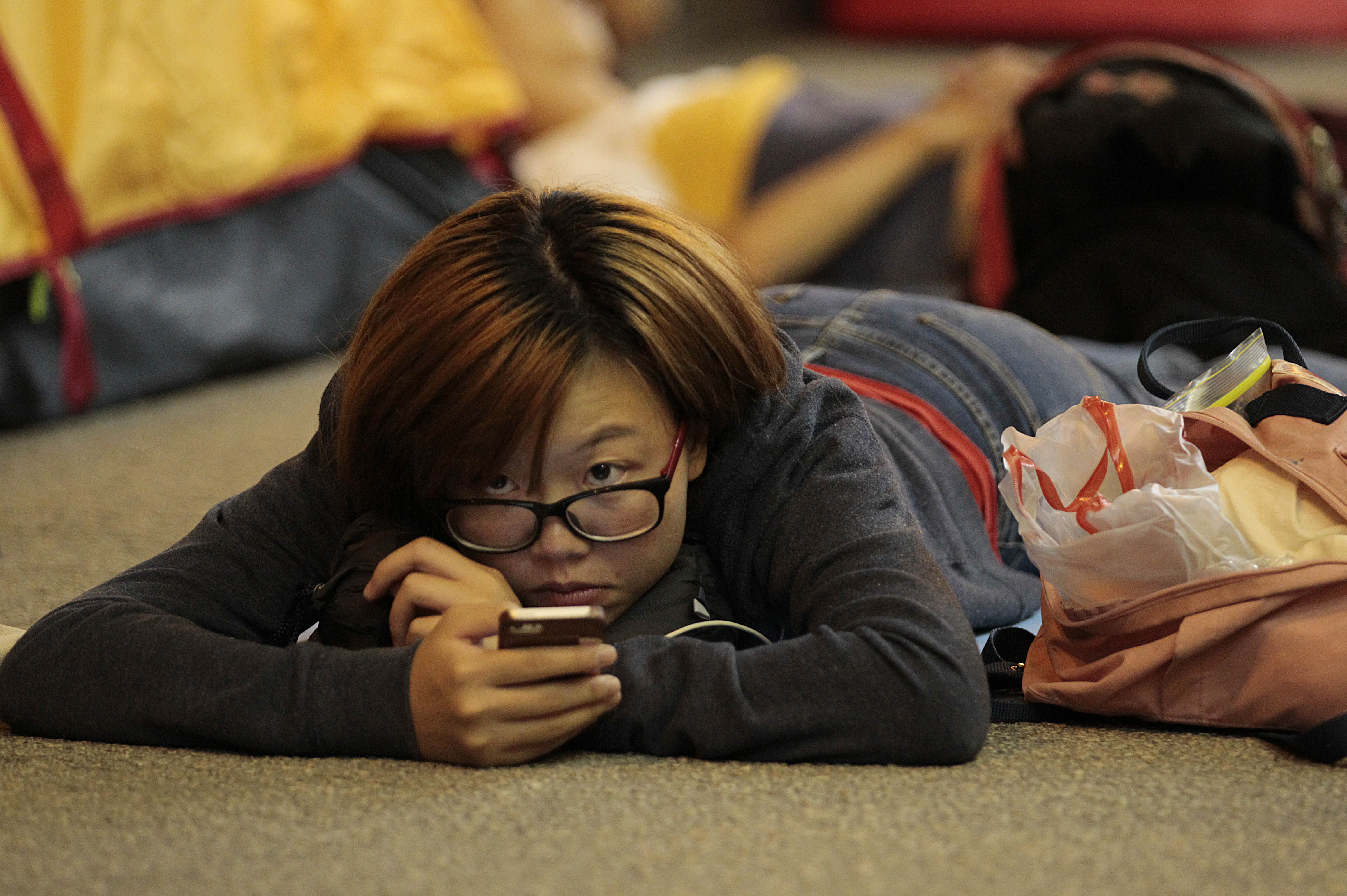
Nine University of Hong Kong students offered free advice on how to identify and treat phone addiction to pedestrians at Causeway Bay Tuesday afternoon, the South China Morning Post (SCMP) reported.
The students believe it was vital for the public to be educated on the implications of this 21st century problem. Focusing on the physical symptoms, Ricky Lau Hok-chun, a fourth-year medical student at the university commented that, “The syndrome doesn’t come only with age, it also affects more and more young people.”
“We believe there is an urgent need to raise awareness about the problem,” he added.
The students set up a booth on Great George Street, with information on how to identify symptoms of smartphone overuse. One of the test was:
“Imagine you are holding a bottle of water in each hand. Raise your arms into a straight line parallel to the ground. Hold the pose and then turn your wrists as if you are turning the bottles upside down. If you feel tension or pain along your shoulders and upper arms, you might be suffering from what is known as smartphone overuse syndrome.”
Another way to spot addiction was through this exercise:
“…place your thumb in the palm and hold it with the other fingers. Do it with both hands and hold the pose, raise your arms forward until they are parallel to the ground and press your fists down as far as possible. If you feel increasing pain which disappears as soon as you release your thumb, you might have the syndrome.”
Among the causes for these problems were the over-reliance on just one hand to operate a smartphone, repeatedly using the thumb and arching the neck forward to look at the screen for a long time.
Sixteen-year-old Toby Ng Hou-in said he would often watch drama series on his phone during holidays, sometimes from 10pm to 6am, and play games on the phone for two to three hours, causing him pain in his thumb and neck.
“Sometimes my neck was especially painful and I could almost hear it cracking when I moved it,” he said.
“I found the tips and exercises very useful. And I will definitely reduce my time on the phone as much as possible,” Ng added.
They also taught curious passer-bys the right posture in using a smartphone and simple exercises to relieve overuse syndrome.
Among the steps that one can take to overcome this addiction are :
• Reduce the amount of time you spend on your smartphone
• Change your habit of using your phone with just one hand. Try to use one hand to hold the phone while operating it with the fingers of the other hand
• Instead of bending the neck down to look at the phone, try to raise the phone to give your neck a rest
• Exercise by stretching your fingers, palms, arms and neck
• Consult your doctor for more professional advice
Game of Phones

Student pro-democracy activists use their smartphones while sitting on the streets near the government headquarters, Thursday, Oct. 2, 2014 in Hong Kong. Source: AP.
Millennials in Hong Kong grew up with the Internet, and as the technology on mobile devices penetrated markets worldwide.
A 2015 research by Connected Life and global research consultancy TNS found that Hong Kong millennials spent one day every week on their phones.
The average millennial aged 16 to 30 in the city spends 2.8 hours a day on their mobile devices. That comes up to almost 20 hours per week, or 42.5 days in a year.
“Over the decade we have seen our lives revolutionised by the introduction of first mobile and then smartphones, but millennials in Hong Kong have largely grown up with this technology,” said Anita Wong, managing director of TNS Hong Kong to SCMP.
The study also found that Thais are the most addicted to their phones by devoting 4.2 hours per day to their mobiles. They were followed by mainland Chinese and Malaysians who spend 3.9 and 2.8 hours daily respectively.
In the Asia-Pacific region, Hong Kong has one of the highest smartphone penetration rate, according to a study by Nielsen. About 87 per cent of Singapore’s 5.4 million population own smartphones, with a similar percentage of Hong Kong’s population also owning the same.
Liked this? Then you’ll love these…
It’s true, internet surfing during class is not so good for grades
U.S. university introduces new class which teaches using games like Pokémon GO







